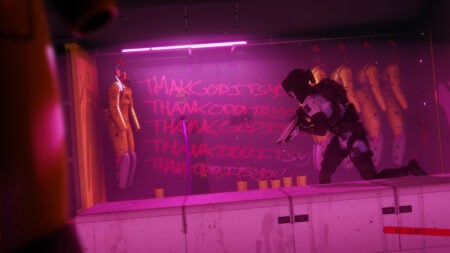Title: Signs of the Sojourner
Developer: Echodog Games
Publisher: Echodog Games
Website: Signs of the Sojourner
Genre: Adventure, Deck-building
Available On: Itch.io, Steam, Nintendo Switch (In Development)
Release Date: May 14, 2020
Version Tested: PC
Signs of the Sojourner is one of the most cohesive games released in a good long while. The artistic and mechanical aspects of this game blend together in a nearly flawless representation of human interaction.
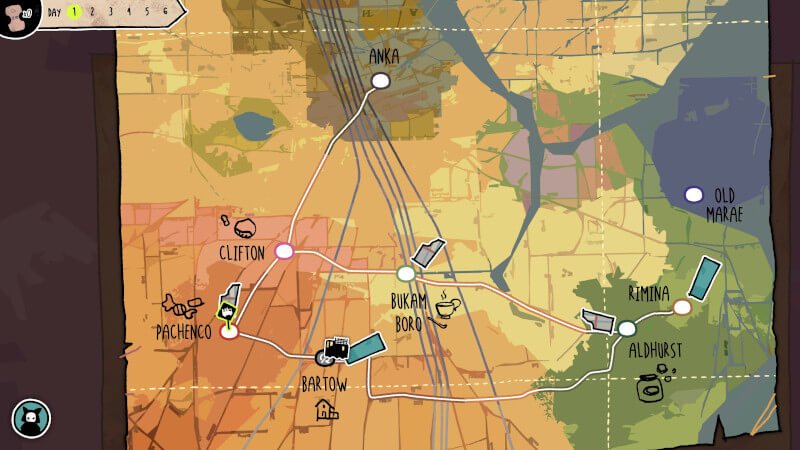
Working-Class Struggles
Players take the role of the Sojourner from the game’s title as she embarks on her first journey as part of a caravan through a vaguely post-apocalyptic landscape. The goal of this journey is ultimately to save the player character’s hometown. That town, a small desert village called Barto, relies on the caravan for commercial income. At the opening of the game, the members of the Caravan are considering a route change that would bypass Barto.
The task for the player is to convince the caravan to continue visiting Barto. To do this players must stock the shelves of a small shop with a selection of goods from towns along the caravan’s route. There is also the lingering mystery of the player character’s mother, who has recently passed away and never shared many details of her life as a member of the same caravan the player is joining.
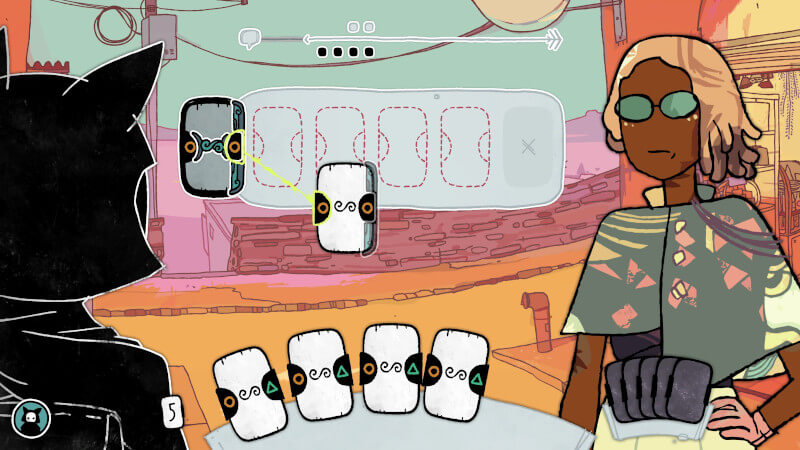
Conversational Cards in Signs of the Sojourner
Virtually all of this information is conveyed to players through Signs of the Sojourner’s elegant card game conversation mechanic. Almost the entire game is made up of conversations between the various colorful characters in the game and the player character. To engage in conversation the player and the character in question play cards with symbols on their left and right edges. These symbols represent various modes of thinking, attitudes, and vibes, like ‘Logical and Diplomatic’ or ‘Empathetic and Observant’ for example.
Cards may have multiple symbols on either edge. Some cards will have additional effects on them which take their names from various rhetorical concepts. The ‘Accommodate’ card, for example, will copy the symbols of the last card played. Cards are played side by side with the goal of matching the symbols up. It’s a very simple system at the start of the game when most of the characters the player meets have decks with only two symbols. As the game progresses and more symbols and card effects appear it becomes deeper, more challenging, and much more satisfying when played successfully.
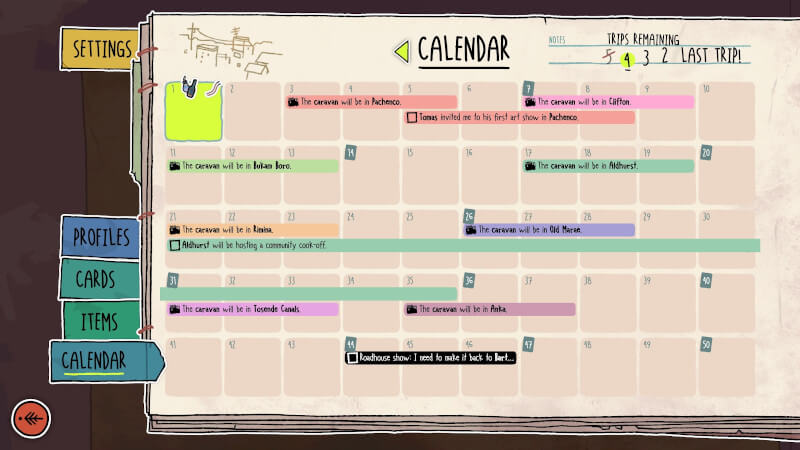
Signs of the Sojourner Deck of Discussion
The deck-building aspect of Signs of the Sojourner comes into play constantly. The player’s deck is limited to eight cards and after each conversation, players must replace one card with a card that was played ‘against’ them in the last match. This creates a situation where conversations become about more than just learning the routes needed to navigate the world or convincing characters to sell the player their wares. These are the player’s main objective but they also need to bait out cards with new symbols that will appear more frequently as the journey continues. Oftentimes the ideal situation for the player is to exhaust all conversation options by intentionally failing conversations.
This is where most of the risk and tension of the game comes from. A player might really need that one Kimci vendor to sell them a pot of pickled cabbage. They also might really need him to play one specific card to really tie their deck together for the next town but playing the wrong symbol could lead to no new card and no Kimci for the store back in Barto. It’s remarkable how much a deck can change over the course of one journey, to the point where on returning home conversations that were virtually impossible to fail become difficult. This system speaks to a truth about the way people’s communication styles change over time depending on who they’re talking to and is Signs of the Sojourner’s greatest accomplishment.
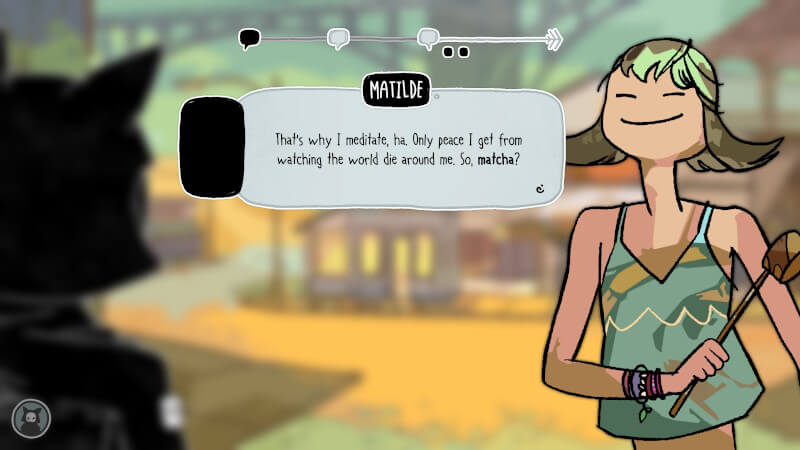
Distinctive Dialog for Signs of the Sojourner
Any game that puts conversations front-and-forward will live and die by it’s writing. It’s a great thing then that Signs of the Sojourner has some of the most evocative and distinctive writing around. There are more than thirty characters in Signs of the Sojourner and most of them can be engaged in conversation many times throughout the game. The dialog for each of these characters feels distinct and expressive and gives a great sense of who they are and what they’re all about. This is no small feat in a game without voice acting.
The writing has some help from the game’s art when it comes to characterizing the people the player meets in their travels. For characters that don’t really animate except for changes in facial expression, the ones in this game really make it clear when they’re vibing with the player and when they’re not.
The art and music in Signs of the Sojourner also do a fantastic job of evoking a place and situation. As part of the player’s journey, the game will revisit the same locations multiple times in different circumstances. On each occasion the music changes, sometimes drastically and other times subtly depending on what the situation in that place is. The art and music are also wonderfully pleasant to look at and listen to in general.
The tone of Signs of the Sojourner is also delightfully pleasant especially for a game set post-apocalypse. Perhaps post-post-apocalypse is a better descriptor for this game. It gives the sense that these characters are a generation or two removed from whatever came before and consequently are accustomed to this reality. A reality where coastal cities are flooded, roads are treacherous and dangerous and where elites exercise lethal economic influence. Despite all this, the characters in this game, with one or two exceptions, seem genial and willing to talk, listen, and collaborate with each other.
Final Verdict: Signs of the Sojourner is a phenomenal game about the art of interpersonal communication and the ways that people come together and drift apart. A wonderfully cohesive and touching experience.
[review]






